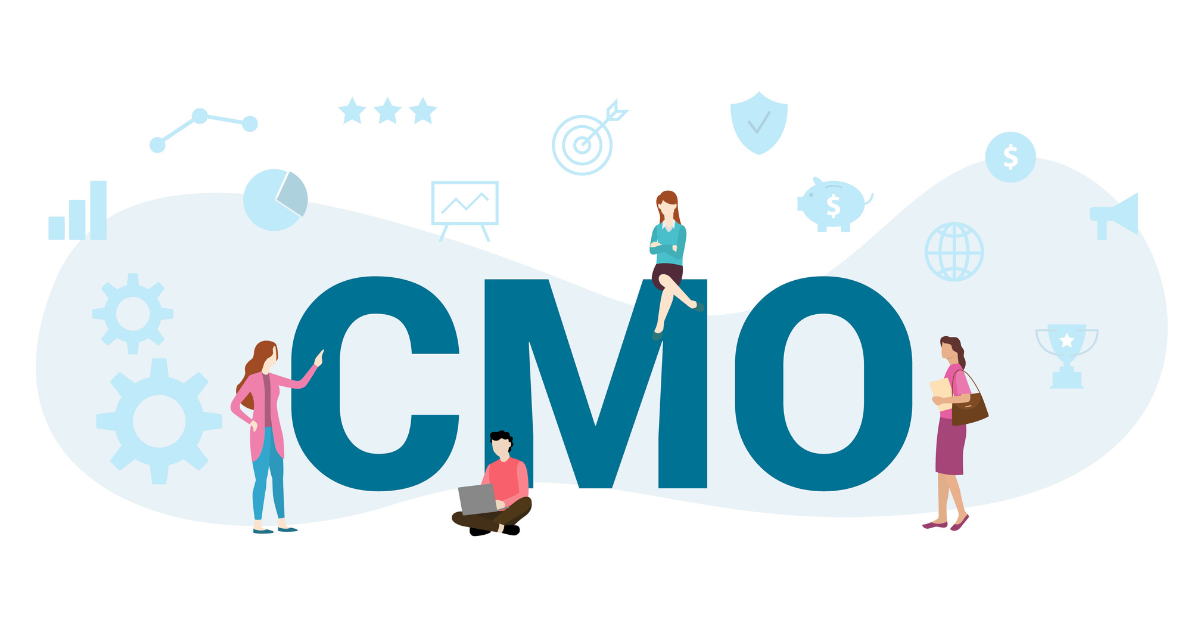There’s truly no need for us to restate the details of the current coronavirus conditions we find ourselves in. With many businesses feeling like they’re in a tailspin, it’s more important now than ever to take a calm, calculated look at your marketing, advertising and overall communication efforts. And while every business is different and the level to which they’ve been impacted by the pandemic varies, we’ve put together a list of universal considerations and thought starters to focus on as we all try to navigate these uncertain waters.
#1 Don’t Lose Sight
While quick decision making and flexibility are a necessity in our current environment, now is not the time for kneejerk reactions or rash decisions. From a public perception standpoint, the way a brand responds to these trying times can make or break them in the court of public opinion. Remember the values and attributes that brought you and your business this far in the first place.
Rally Around Your Core
Realign yourself and your teams around your mission, vision and values. While this might seem elementary, having these tenets top of mind will give you an unshaking foundation amid the uncertainty around you.
Another guiding light is your set of brand standards. While it’s important to be responsive, timely and flexible in your communications, it shouldn’t come at the cost of your brand voice. Staying consistent in voice can help you find that delicate balance between empathy and corporate confidence during a time where consumers are feeling more wary than ever. It can also help brands avoid coming across and pandering, insincere or opportunistic.
In all communications, ask yourself the following questions:
Is this message necessary?
Is this message timely?
Is this message appropriate?
Is it in line with our brand voice and position in the market?
Does it serve our customers, community or corporate interests?
Revisit Your Business and Marketing Plans
Familiarizing yourself with your original plans for the year and the goals you’d hoped to accomplish can help establish context for a period that will certainly require repositioning and reprioritization.
While process and messaging automation have become a marketer’s best friend in this day and age, the practice of revisiting your plans should include an audit of any messages or creative elements that were previously scheduled to be sent or posted. This should include taking a look at your email and 1:1 message automations such as pre-scheduled or triggered emails, customer onboarding series, syndicated social posts, pre-published blogs and any other content managed in your technology stack. No business should suffer public ire because of an innocent, previously-scheduled piece of content that lacks taste when viewed through the lens of our current environment.
#2 Prioritize and Pivot
After gaining clarity from your plans and existing creative, it’s time to identify what can stand as is, what requires updates or repositioning and what requires a complete pivot. This includes taking a fresh look at budgets and available resources. It is also important to specifically outline where deficits lie. Were you banking on a content creation budget that has since been reallocated? Have your media budgets changed? Was your team affected by restructuring? All of these are important points to outline and list so that they are visible at a glance.
One major roadblock facing many marketers today is the cancellation of conferences, trade shows and other person-to-person experiences that make up a large portion of their new business and prospecting efforts. There are many ways to pivot by investing in platforms, paid media or other means.
- If your product requires demonstration, consider creating content to demonstrate features, uses or functionality. While new, large-scale video production may be out of the question, consider options for live broadcasts on social media or more personal video shot via smartphone or webcam. The less polished or impromptu nature of these types of content shouldn’t deter you if they don’t go against strict brand standards. During a time where people are disconnected physically, making a connection across the web can be a valuable approach.
- Consider webinars for product or platform demonstrations. To take it a step further, consider conducting a live webinar and repurposing the recording as evergreen video content or a pre-recorded, scheduled webinar in the future.
- Invest in new or additional paid media centered around retargeting. Even if you’re already running a successful digital ad campaign, incorporating (more) paid efforts centered around retargeting can help you concentrate budgets geared towards continuing the conversation with individuals who have already visited your site, engaged with a previous ad, interacted with social content and more. While each paid media tactic serves an important purpose, doubling down on targeting individuals that have already had contact with your brand rather than cold or interest-based traffic can help your dollars go farther – as long as you have the engagement and/or traffic to help fuel such campaigns. As an additional value, these campaigns can help to put timely messages in front of your most loyal customers, inject new creative into consumer conversations and retain top-of-mind awareness during tumultuous times.
- Focus on optimizing the content you already have. By upcycling, repurposing and optimizing blogs, case studies and other assets, you can make sure that your content is doing as much heavy lifting as possible. And since this is something you should be doing regardless, now is as good of a time as any to create a process document outlining who, when and how you will manage optimization in the future.
Since none of us truly know how long restrictions will be in place, the breadth of economic impact or the effects COVID-19 will have on your organization, it’s important to plan for the present but keep an eye on the future. Pivoting too much might be ill-advised if we observe a shorter timeline than some anticipate, while underestimating the potential impact can leave you blindsided. Regardless of your situation, consider setting quarterly strategies and reevaluating those at regular intervals. This timeframe will allow you to implement systems that will have time to gain relevance but stay fluid enough to pivot if need be.
One final thing to remember is there is no shame in pivoting strategies. Even Fintech giants QuickBooks have pivoted their previously-planned TV buy to spotlight small businesses and their community impact. Many advertisers are reallocating their budgets that were intended to be spent during live sports broadcasts to over-the-top (OTT) entertainment advertising. And according to several studies, many brands are increasing their investments in Facebook and Google advertising. All that said, if you find yourself needing to pivot, you’re certainly in good company.
#3 Set and Celebrate Goals, Even If They’re Small Wins
Maintain traffic. Decrease bounce rates. Increase time on site. Improve conversion rates. Increase net promoter score or customer satisfaction. Not every goal has to be a major milestone or transformational win. In times like these, sometimes maintaining status quo or minimizing losses are a win in and of themselves. Regardless, set some realistic goals for your modified efforts. Set periodic checkpoints and celebrate when these goals are met.
#4 Expect Variance
In a previous piece, we wrote about how COVID-19 is affecting organic search metrics. In that piece, we noted that among emfluence clients, we have observed an average 10% decrease in organic traffic and 11% decrease in primary conversions. While we’ve taken steps to mitigate losses resulting from the pandemic, it’s a clear reminder of the uncertainty and inconsistency in results we can expect to see as user behaviors ebb and flow during this crisis. This doesn’t mean we should stand idly by and become products of our environments, but it does reiterate the point that we should not interpret present results as future indicators.
What is true for organic search is also true for paid media. As brands begin to pivot in the ways we’ve illustrated above, we can expect to see variance in key campaign factors like cost per click, cost per impression and cost per conversion as the platform inventory grows in demand. As we move forward, expect to see changes in KPI’s for existing campaigns, but you shouldn’t overreact to those changes. Don’t use atypical datapoints or outlier results as the basis for your future goal planning or performance benchmarking. Take the changes as they come, focus on channel optimization and keep a watchful eye on results.
Not only should you expect variance in performance, but marketers should also prepare for anomalies when it comes to data collection. As an example, when implementing an analytics tool such as Google Analytics, it is always recommended that traffic from your internal teams be filtered out of your pool of collected data. This is most commonly done by filtering out data collected from users who fall under the IP address of your company’s offices. With a workforce that is largely operating from home at the present, expect to see changes in website hits and traffic acquisition trends. Of course, you could always filter out each individual person’s home IP address, but for larger teams, that’s a hefty request.
The same can be said for those utilizing CRMs or lead platforms that intuit a contact’s company based on their known IP address. It’s likely that we will see anomalies in that regard as well. With this in mind, it’s important to have a sound data acquisition plan in place in order to best account for the data points that are within your control.
#5 Double Down on Data
Now more than ever, we must be good stewards of our budgets – and part of that is being increasingly attentive to data and performance. If you or your organization have not been particularly data driven, now is the time to invest in implementing a sound tracking strategy. Google Analytics is free and requires very little technical support to install, especially with most modern content management systems.
Once implemented, there are a number of free or low cost, third-party analytics dashboarding tools that allow you to connect your various ad platforms, websites and communications tools, displaying data in one centralized location. While we always recommend a robust and thoughtful performance management plan and analytics/data visualization stack, the available plug and play platforms are a good start towards being data aware. Since every business is different and budgets and needs vary, sites like G2 have details and reviews of the top digital analytics software platforms all in once place.
Once your platforms are in place, consider taking additional care at the onset of campaigns and efforts to ensure that you’re feeding them clean, segmented data.
- If you’re running print or outdoor ads (or even multichannel digital campaigns), consider implementing unique call tracking numbers to determine what placements are driving direct action.
- Start using tracking URLs in ads, on social media and other marketing channels. While it may seem daunting to build these at first, Google has a free tool that helps make sense of the various parameters available.
By focusing on optimizing the things within your control, realigning and rallying behind your organizational core and taking an empathetic look at the landscape around us, we as marketers and members of this global community can better navigate the uncertainty of these times while still being cognizant and proactive when it comes to our business interests. Remember, first and foremost, we’re all in this together.



